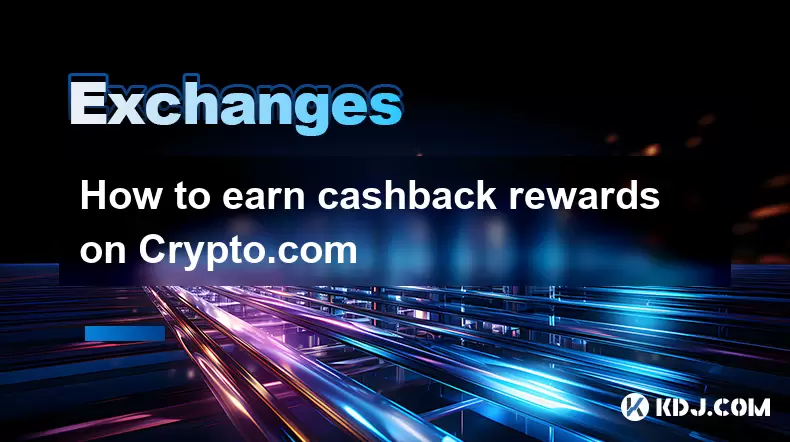-
 Bitcoin
Bitcoin $118000
0.40% -
 Ethereum
Ethereum $4525
2.14% -
 XRP
XRP $3.111
0.18% -
 Tether USDt
Tether USDt $1.001
0.00% -
 BNB
BNB $857.7
2.51% -
 Solana
Solana $192.7
1.99% -
 USDC
USDC $0.9999
-0.01% -
 Dogecoin
Dogecoin $0.2372
2.81% -
 Cardano
Cardano $0.9621
4.53% -
 TRON
TRON $0.3550
1.92% -
 Chainlink
Chainlink $25.91
14.15% -
 Hyperliquid
Hyperliquid $46.75
0.08% -
 Stellar
Stellar $0.4288
0.33% -
 Sui
Sui $3.817
1.25% -
 Bitcoin Cash
Bitcoin Cash $585.5
-0.31% -
 Ethena USDe
Ethena USDe $1.001
0.00% -
 Hedera
Hedera $0.2545
0.88% -
 Avalanche
Avalanche $25.26
4.03% -
 Litecoin
Litecoin $121.4
0.85% -
 Toncoin
Toncoin $3.502
1.28% -
 UNUS SED LEO
UNUS SED LEO $9.588
1.89% -
 Shiba Inu
Shiba Inu $0.00001315
1.21% -
 Uniswap
Uniswap $11.19
1.40% -
 Polkadot
Polkadot $4.099
3.12% -
 Dai
Dai $1.000
0.00% -
 Bitget Token
Bitget Token $4.694
1.31% -
 Cronos
Cronos $0.1518
0.03% -
 Monero
Monero $269.7
6.61% -
 Ethena
Ethena $0.7200
-1.56% -
 Pepe
Pepe $0.00001128
1.97%
Binance transaction password setting: two-step verification and anti-phishing safety guide
Setting up a transaction password on Binance adds security to your account; it's different from your login password and used for withdrawals and high-security actions.
Jun 02, 2025 at 06:22 am

Introduction to Binance Transaction Password
Setting up a transaction password on Binance adds an additional layer of security to your account, ensuring that only you can execute transactions. The transaction password is different from your login password and is specifically used for withdrawals and certain other high-security actions. This guide will walk you through the process of setting up your transaction password and discuss the importance of two-step verification and anti-phishing measures to keep your account safe.
Setting Up Your Transaction Password on Binance
To set up your transaction password on Binance, follow these detailed steps:
- Log into your Binance account. Make sure you are on the official Binance website (www.binance.com) to avoid phishing sites.
- Navigate to the security settings. Click on your profile icon at the top right corner, then select 'Security'.
- Scroll down to the 'Transaction Password' section. You will see an option to 'Set Transaction Password'.
- Enter your desired transaction password. It must be at least 8 characters long and include a combination of numbers, letters, and special characters for enhanced security.
- Confirm your transaction password. Enter the same password again to confirm.
- Complete the verification process. You might be required to enter a verification code sent to your registered email or phone number.
- Save your changes. Once the verification is successful, your transaction password will be set.
Importance of Two-Step Verification (2FA)
Two-step verification (2FA) is crucial for enhancing the security of your Binance account. It adds an extra step to the login process, requiring you to enter a unique code generated by an authenticator app or sent via SMS. This makes it much harder for unauthorized users to access your account even if they know your password.
To enable 2FA on Binance:
- Go to the security settings as described in the previous section.
- Find the 'Two-Factor Authentication' section.
- Select your preferred method of 2FA. You can choose between an authenticator app (recommended) or SMS.
- Follow the prompts to set up 2FA. For an authenticator app, you will need to scan a QR code and enter the generated code to confirm.
- Save your backup codes. These are essential if you lose access to your 2FA method.
Understanding Anti-Phishing Code
An anti-phishing code is a unique code that you can set on your Binance account to help you identify legitimate communications from Binance. This code is not a password but a safety measure to protect against phishing attempts. If you receive an email or message purporting to be from Binance, you can check if it includes your anti-phishing code to verify its authenticity.
To set up your anti-phishing code:
- Access the security settings on your Binance account.
- Locate the 'Anti-Phishing Code' section.
- Enter a unique code. This should be something memorable but not easily guessed.
- Confirm your code and save the changes.
Best Practices for Maintaining Account Security
Maintaining the security of your Binance account goes beyond setting up a transaction password and 2FA. Here are some best practices to keep in mind:
- Regularly update your passwords. Change both your login and transaction passwords periodically.
- Use strong, unique passwords. Avoid using the same password across different platforms.
- Be cautious of phishing attempts. Always double-check the URL before entering any sensitive information and never click on suspicious links.
- Monitor your account activity. Regularly check your transaction history for any unauthorized actions.
- Keep your devices secure. Use up-to-date antivirus software and avoid using public computers for accessing your Binance account.
Common Mistakes to Avoid
Several common mistakes can compromise the security of your Binance account. Being aware of these can help you avoid potential pitfalls:
- Reusing passwords. Using the same password for multiple accounts increases the risk of a breach.
- Ignoring 2FA. Not setting up or disabling 2FA leaves your account vulnerable.
- Sharing sensitive information. Never share your transaction password, login password, or 2FA codes with anyone.
- Falling for phishing scams. Always verify the authenticity of communications from Binance before taking any action.
Frequently Asked Questions
Q: What should I do if I forget my transaction password?
A: If you forget your transaction password, you can reset it by going to the security settings on your Binance account. You will need to verify your identity through your registered email or phone number. It's crucial to keep your contact information up to date to ensure you can reset your password if needed.
Q: Can I use the same password for my login and transaction password?
A: It is highly recommended not to use the same password for your login and transaction password. Using different passwords adds an extra layer of security, as a breach of one password does not automatically compromise the other.
Q: How often should I update my transaction password?
A: It is a good practice to update your transaction password every few months or immediately if you suspect any security breach. Regular updates help maintain the integrity of your account's security.
Q: What should I do if I suspect my account has been compromised?
A: If you suspect your account has been compromised, immediately change your login and transaction passwords, enable or reset 2FA, and contact Binance support for further assistance. Monitor your account closely for any unauthorized transactions and report them promptly.
Disclaimer:info@kdj.com
The information provided is not trading advice. kdj.com does not assume any responsibility for any investments made based on the information provided in this article. Cryptocurrencies are highly volatile and it is highly recommended that you invest with caution after thorough research!
If you believe that the content used on this website infringes your copyright, please contact us immediately (info@kdj.com) and we will delete it promptly.
- Kazakhstan's Crypto Leap: Bitcoin ETF and Central Asia's Digital Finance Future
- 2025-08-13 12:45:19
- BlockDAG Presale Blazes Past $371M: Fundraising Frenzy Fuels Crypto Sensation
- 2025-08-13 13:05:21
- Meme Coins: Chasing the 2025 Surge – Which Will Moonshot?
- 2025-08-13 10:25:23
- Bitcoin's Wild Ride: Rally, Pullback, and What's Next
- 2025-08-13 10:25:23
- Bitcoin, Bitmax, and Institutional Demand: A New Era of Crypto Investment
- 2025-08-13 10:45:12
- Solana, ROAM, and Airdrops: What's the Buzz in 2025?
- 2025-08-13 11:35:13
Related knowledge

How to use margin trading on Poloniex
Aug 08,2025 at 09:50am
Understanding Margin Trading on Poloniex

How to read the order book on KuCoin
Aug 10,2025 at 03:21pm
Understanding the Order Book Interface on KuCoinWhen accessing the order book on KuCoin, users are presented with a real-time display of buy and sell ...

How to read the order book on KuCoin
Aug 12,2025 at 02:28am
Understanding the Basics of Staking in CryptocurrencyStaking is a fundamental concept in the world of blockchain and cryptocurrencies, particularly wi...

How to set price alerts on Kraken
Aug 11,2025 at 08:49pm
Understanding Price Alerts on KrakenPrice alerts on Kraken are tools that allow traders to monitor specific cryptocurrency pairs for price movements. ...

How to avoid high gas fees on Uniswap
Aug 13,2025 at 11:35am
Understanding Gas Fees on UniswapGas fees on Uniswap are payments made to Ethereum miners or validators for processing transactions on the blockchain....

How to earn cashback rewards on Crypto.com
Aug 12,2025 at 02:08am
Understanding Cashback Rewards on Crypto.comCashback rewards on Crypto.com are a feature designed to incentivize users to spend using their Crypto.com...

How to use margin trading on Poloniex
Aug 08,2025 at 09:50am
Understanding Margin Trading on Poloniex

How to read the order book on KuCoin
Aug 10,2025 at 03:21pm
Understanding the Order Book Interface on KuCoinWhen accessing the order book on KuCoin, users are presented with a real-time display of buy and sell ...

How to read the order book on KuCoin
Aug 12,2025 at 02:28am
Understanding the Basics of Staking in CryptocurrencyStaking is a fundamental concept in the world of blockchain and cryptocurrencies, particularly wi...

How to set price alerts on Kraken
Aug 11,2025 at 08:49pm
Understanding Price Alerts on KrakenPrice alerts on Kraken are tools that allow traders to monitor specific cryptocurrency pairs for price movements. ...

How to avoid high gas fees on Uniswap
Aug 13,2025 at 11:35am
Understanding Gas Fees on UniswapGas fees on Uniswap are payments made to Ethereum miners or validators for processing transactions on the blockchain....

How to earn cashback rewards on Crypto.com
Aug 12,2025 at 02:08am
Understanding Cashback Rewards on Crypto.comCashback rewards on Crypto.com are a feature designed to incentivize users to spend using their Crypto.com...
See all articles

























































































